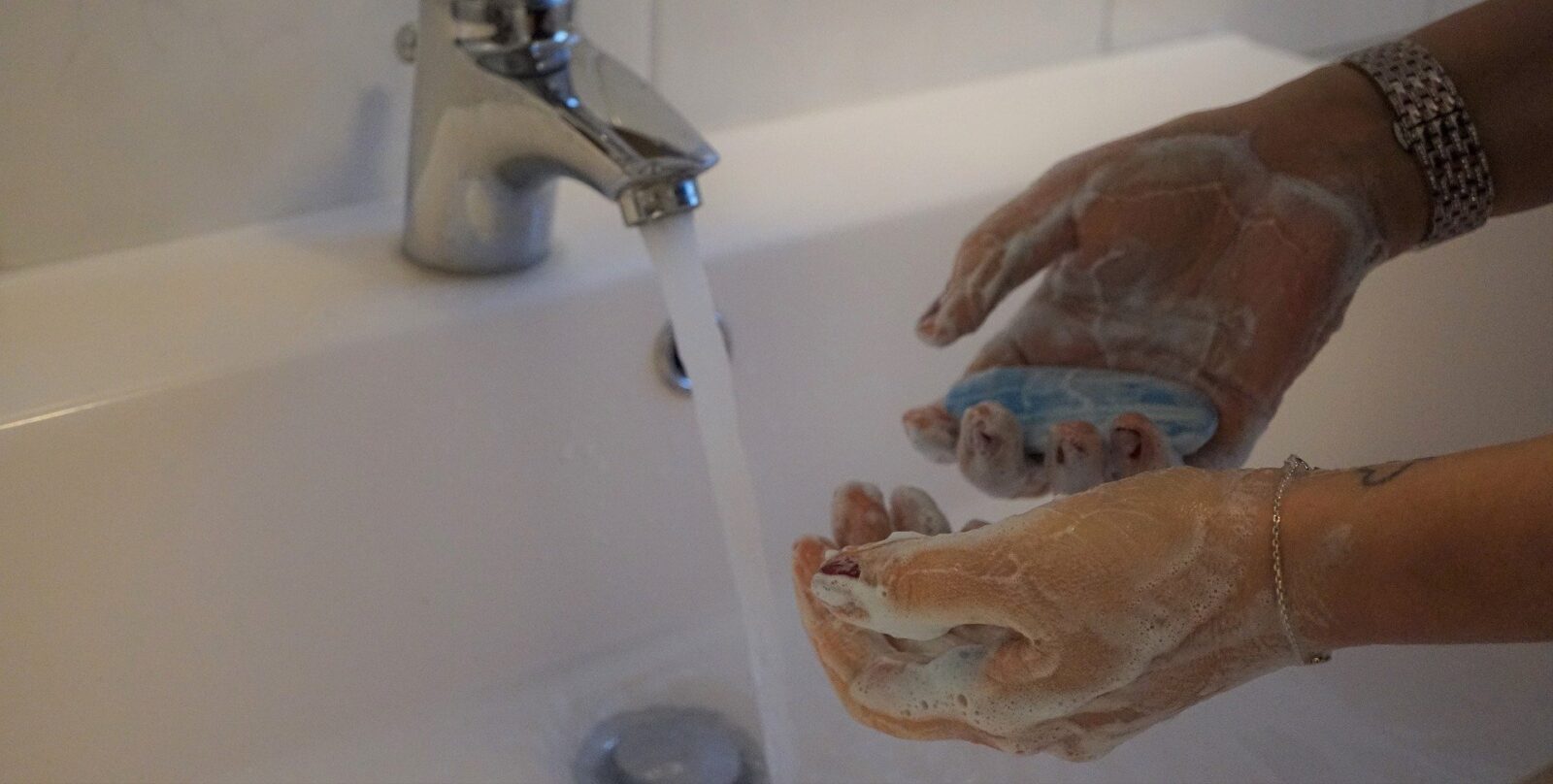The Emotional Causes of Our Fear of Coronavirus
As an educator and researcher of emotion and leadership, I’ve decided to apply an emotion lens to our fear of COVID-19 for two primary reasons. First, as anyone who saw Pixar’s Inside Out can tell you, fear is an emotion. In fact, it’s one of the five basic emotions (along with joy, anger, sadness and … Pixar curiously left only one emotion out of its allegorical fable of the basic emotions: love). Second, I’m a firm believer in Spinoza’s dictum that “Emotion, which is suffering, ceases to be suffering as soon as we form a clear and precise picture of it.” Put simply: If we can better understand our fear of coronavirus, we are less likely to suffer from it.
How Panic Emerges
So why the global panic? Because an emotion such as panic, based on the emotion prototype approach pioneered by the University of Denver psychologist Phillip Shaver, is a subordinate emotion of the primary emotion of fear. According to this approach, we first feel one of the basic or primary emotions; then, as I outline in a recently published study, we repeat “prototypical scripts” in our minds (in lay terms, the “inner chatterbox”) until the subordinate emotion emerges. Let’s take loneliness and depression, for instance. Both are subordinate emotions of the primary emotion of sadness. After we first feel sad, if we subsequently ask ourselves, “Why aren’t my social relationships as meaningful as I want them to be?” we are likely to feel lonely; if, on the other hand, we ask ourselves “Why isn’t my life as meaningful as I want it to be?”, we are likely to then feel depressed.
Panic is different from fear in that it is a social emotion. In other words, we usually don’t innately feel panic; rather, we observe the social actors around us whom we look up to. If they panic, we follow suit and panic too. Let’s consider how this happens. Imagine you are sitting on a plane during a turbulent ride. A few bags fall from the overhead bins. You feel the first inklings of the primary emotion of fear. You try to make sense of what’s just happened. You decide not to panic. Then, the flight attendant runs quickly down the aisle and straps herself into a seat. You observe a look of fear on her face and the slight trembling of her hands. You infer from her behavior (hence, the social element of the emotion) the prototypical script, which you repeat in your mind—“A person whom I consider an authority on air travel is panicking”—and then you panic.
With COVID-19, more global health experts than you could shake a thermometer at—including the CDC—have issued highly charged, cautionary reports. Since we consider these people and organizations to be an authority on the nature of viruses, our fear has transmuted into panic.
Let’s now take a look at why our fear continues to grow and become, for many, unmanageable—the suffering to which Spinoza refers. If you are checking your phone or turning on the television more than once or twice a day for the latest coronavirus infection and death updates, you are probably in this burgeoning camp.
Understanding Fear as an Emotion
Since fear is an emotion, it’s important that we first understand how an emotion comes into existence. We are constantly evaluating people, situations and events around us to determine if they are facilitating or obstructing our goals, values and interests. These continual evaluations determine the valence of an emotion—whether it is positive or negative. If we appraise the person, situation or event as facilitating our goals or values, we experience a positive emotion such as joy, gratitude or exhilaration. If, on the other hand, we assess the person, situation or event to be hindering us from realizing a goal or value, we experience a negative emotion—such as anger, sadness or, yes, fear. This subconscious evaluation—is this person, situation or event good or bad for me?—is the primary appraisal that produces a (primary) emotion.
In the case that we consider a person, situation or event to be obstructing a goal or value we hold dear, we then make a secondary appraisal. This second evaluation—“Do I have the internal resources to cope with this person, situation or event?”— is critical. In other words, we assess our own capacity to handle what has stimulated the negative emotion currently afflicting us. These two appraisals are at the heart of foundational emotion theories developed in the late 1980s and early 1990s by the late psychologists Berkeley Richard Lazarus of the University of California at Berkeley and Nico Frijda of the University of Amsterdam. These theories helped paved the way for current research on human emotion.
With the coronavirus, we experience fear not only because it goes against our values and goals—e.g., to live a healthy, long life (the primary appraisal)—but because we don’t know how to cope with it (the secondary appraisal). We feel caught off guard with our pants down, unable to determine how to return to our normal, comfortable, pre-petrified-of-a-new-virus life. Since the primary appraisal (it’s bad for me) and secondary appraisal (I don’t know what I can do about it) of coronavirus are both overwhelmingly negative, we begin to experience some of the most toxic low-intensity negative emotions such as powerlessness, depression or disillusionment with life and even a smattering of high-intensity negative emotions such as fear, and, yes, with the facilitation by and imprimatur of others we deem knowledgeable on the subject of viruses, panic.
Transform Your Fear
So what can we do about it? To shift our emotions from their current state (e.g., fear and panic) toward a healthier state (e.g., optimism, gratitude, contentment), we must use the most effective emotion regulation strategy out there, cognitive reappraisal. Here’s the logic of this strategy: “OK, I am now feeling fear, panic and even powerlessness because of my primary (the coronavirus is upsetting my world) and secondary (there’s not much I can do about it) appraisals of the coronavirus. I will now reframe the situation to change how I feel about it.”
There are two primary forms of reappraisal: detached and positive. Detached reappraisal involves disengaging from the emotional implications of a given situation. Whether through mindfulness, some other form of meditation, or just going for a long walk at sunset and letting the mental dust settle that’s been stirred up all day by gulp after gulp from the digital news industrial complex goblet, you distance from the situation to see it more clearly. Imagine yourself looking through a camera lens at a tree you are standing right in front of (social media feeds about the coronavirus). You take a number of steps back until you see more than the tree bark. Soon you see the entire forest again (a holistic view of your life and how you intend to live it; the history of viruses and medical efforts to contain them; and so on) and your life comes back into perspective.
Positive reappraisal, on the other hand, emphasizes the positive implications or benefits of any given situation. Also called “benefit finding,” it involves a search for the benefits of the situation to your life. Here are a few positive thoughts that could arise in relation to the coronavirus: “There’s no need to get so worked up, the self-quarantining seems relatively effective,” “Let’s take a page from China’s trajectory, where new cases have dropped from over 14,000 per day to under fifty per day. We’re not there yet, but probably will be soon,” and “It seems the coronavirus is a wake-up call in my life to take more time to appreciate, spend time with and call—imagine, using my phone as a phone—the people I love.”
Don’t Be Too Positive
While at first glance positive reappraisal seems a wonderful strategy, we must take care not to don rose-colored glasses that inhibit our taking necessary precautions. One telling finding is that despite its long-term benefits to health and well-being through the experience of positive emotions, positive reappraisal can, in some instances, prevent us from internalizing the signaling effects of negative emotions to be careful and/or change our behaviors. Plausibly for this reason, a correlation has been found between positive reappraisal and high-risk sexual activity among gay and bisexual men. You can make the decision to conduct your own comparative analysis on how each nation has responded to COVID-19 and determine the lessons that will influence your own daily habits to avert the virus.
Overall, you can shift from panic to a healthy, proactive fear by spending less time on your social media feeds becoming stressed about the coronavirus and more time developing your own narrative about it. Balance searching for the benefits of your current situation with taking the necessary precautions to avoid the virus. Step back from your devices and find peace inside. In so doing, you will transform yourself into a better internal emotional state and, soon, a better external situation marked by the abatement of COVID-19.





There Are 2 Comments
Joan Soncini, PhD4-14-2020
Kudos! This is the best treatment of the situation I have read!
Signed,
Joan Soncini, PhD
카지노사이트6-5-2020
Super-Duper website! I’m loving it!! Will be back later to read more.I’m bookmarking your feeds also.
Comments are closed.